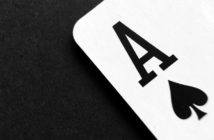Australians gamble around $228 million of their money on poker every single year.
Clearly, we’re a fan of the game in this country! Unfortunately, that stack of hard-earned cash on the table attracts its fair share of nefarious activity too.
Indeed, the chance to earn a quick buck makes cheating at poker a tempting option for some players out there. And that, of course, is bad news for the honest players of the world.
After all, skill, tactics and good judgment only get you so far when there’s a cheater in your midst.
It goes without saying that the ability to spot a trickster is crucial. It’s the only way to a) have a chance of winning, and b) prevent unscrupulous individuals swindling you of your dosh.
Unfortunately, with a huge number of ways to do it, poker’s a game that makes cheating relatively easy. Thankfully, there are some effective ways to watch out for it too.
Want to know what they are?
Keep reading to learn exactly how to spot and stop a poker cheat.
Your Invitation to the Best Online Pokies in Australia
Like a punt on the slot machines?
Our top rated slots for October 2019 are the smash-hit online pokie sites: Ruby Fortune and Jackpot City Casino.
These sites include some impressive matched bonuses – up to $750 and $1600 respectively! With the potential for some seriously big wins, here’s your chance to get a piece of the action:
1. Watch the Dealer
Whoever’s dealing the hand has special ‘cheating power’.
Make sure you keep an eye on them!
One particularly common trick amongst unscrupulous dealers is called bottom dealing. As the name suggests, this is where someone deal’s their own hand from the bottom of a pre-stacked deck.
Here’s the process:
- The sneaky dealer sets some high-value cards at the bottom of the deck.
- They start dealing everyone’s hand from the top as normal.
- They use sleight-of-hand to deal themselves the high-value card(s) from the bottom.
Of course, this is unlikely to be an issue in a professional casino. However, when you’re playing more casually, there’s every chance the dealer might be up to no good.
The best way to prevent this happening is to watch the dealer like a hawk!
Don’t take your eye off the cards as they deal the hand. Alas, this might not be enough—some people have exceptional sleight-of-hand capabilities.
Consider buying an opaque card protector to fit onto the bottom of the deck. This little device prevents bottom dealing from being a problem.
2. Watch for Marks
Marking cards is another classic way to cheat at poker.
The process is simple:
Somebody leaves physical marks on the back of certain cards in the deck, which helps enables their identifications during play. More often than not, high-value cards are picked out for this purpose (aces, in particular, are common targets).
It goes without saying that this is a mighty advantage to anyone in the know.
Keep a watchful eye out for any subtle marks in evidence. The keyword there is ‘subtle’. A simple indent or tiny scratch is enough to highlight particular cards.
One of the hardest parts of spotting this cheat is that older decks inevitably end up showing their age. Differentiating between ordinary wear and tear and purposefully marked cards isn’t easy.
Got any doubts or suspicions? The simplest way around the problem is to use a brand new deck of cards.
3. Watch the Cards
Some poker players very literally have an ace up their sleeve!
Playing with a high-value card held somewhere on your person is one of the oldest tricks in the book. You wait until the hand’s been dealt and then insert the hidden high card into it (swapping it with a lower-value one).
The source of the hidden card varies. Some cheats choose to take it from the main deck, palming a card during the shuffle, for example.
Others might go one step further and buy an identical pack of cards to the ones you play poker with. They’ll then arrive at the table having stashed their card(s) of choice.
Identifying this classic method of cheating at poker isn’t easy.
Generally, all you can do is watch for suspicious behaviour and ensure everyone plays with their cards on the table. Be vigilant against players ‘dropping’ their cards on the floor, or putting their hands under the table/out of sight.
Again, playing with a new deck of different-coloured cards could also help. Anybody who’s brought a card to the table of the old variety can no longer use it without being caught.
4. Watch the Chips
Some people are downright audacious in their attempts to cheat.
For instance, it isn’t unheard of for some players to ‘accidentally’ miscount the number of chips they throw down onto the pile. They might ‘call’, yet fail to add the true number of chips required.
This is another example of a cheat that’s hard to prove. Anyone that commits the crime can just claim they didn’t do it on purpose!
And, to be fair, they might be telling the truth. After all, mistakes do happen—especially when someone is new to the game. However, it shouldn’t happen more than once or twice in a game. Anybody in the habit of ‘making mistakes’ should be confronted and given a caution.
Whether they mean to do it or not, contributing fewer chips than required is unfair on everyone else. Always keep track of the chips people throw down to ensure they’ve added enough.
Looking for more advice to help you win at poker? This post will come in handy.
5. Watch the Chip Count
This cheat is akin to having an ace up your sleeve.
This time, though, it’s chips that get stashed instead of cards.
Do you know how many big value chips you have in your poker set? If not, then it would be all too easy for somebody to add extras to their stack.
Let’s face it, keeping track of everyone’s exact chip count isn’t easy. In the middle of a game, there’s just too much else to think about. The result? People can add chips (from an equivalent non-custom set) to their pile and go unnoticed.
Make sure you know how many chips you have in the set.
Then, at the end of each game, you can count how many get returned. Any difference in tally from the starting number indicates that there’s a cheater in your midst!
You might not know who’s doing it, but at least you realize what’s happening.
6. Watch for Collusion
Collusion is another popular way to cheat at poker.
As opposed to the lone-wolf trickster, though, this type of cheating is based on teamwork.
As the name suggests, collusion occurs when people work together at the table. Instead of a personal pursuit of victory, they intend to win as a group and share the winnings at the end of the game.
Both the number of people working in cahoots and the extent of the collusion can vary. Teams of 2 or more might establish certain rules of engagement for how they’ll play in given situations. Others go even further and create complex signals that reveal their hands to one another.
Regardless of particulars, the end result is an unfair advantage for the team.
Spotting this form of cheating isn’t straight-forward, especially with experienced cheaters at the table! However, be vigilant against noticeable patterns of play that arise between people- particularly friends or close acquaintances.
7. Watch the Check
All manner of signs, motions, looks and actions represent a check these days.
People check with everything from the classic tap on the table to a brief look at the dealer. Alas, this broad spectrum of checking leaves ample room for a simple but effective way to cheat.
Let’s say you’re sat next to the soon-to-be cheater, and it’s their turn to play. They make an action as if to say ‘check’, and, understandably, you assume that it’s now your move.
You check, fold, or raise, only to hear the cheater exclaim that they didn’t, in fact, check! Unaware of the ruse, play returns to them. Unfortunately for you, though, they now know a little more about your hand.
In simple terms, they pretend to check in order to elicit a reaction; the information they glean provides an advantage on how to actually play their hand.
It seems unfair, but the trouble with this cheat is that it’s difficult to prove. Somebody who commits the affront can simply claim that they did it by accident!
How to Spot Somebody Cheating at Poker
Cheating at poker is far from an uncommon issue.
It doesn’t matter whether you’re playing in-person or online. Poker’s just the ideal game for tricksters hoping to cheat their way to victory.
Why? Because there’s a huge number of ways to do it!
That’s bad news for the huge number of Australians who gamble millions of dollars at the poker table every year. After all, the nature of gambling means there’s always the chance of losing money. But with a cheater in your midst, that likelihood increases dramatically.
Worse still, your chance of winning a game dwindles at the same time.
It goes without saying, then, that being able to spot a cheat is a key skill. Hopefully, the information in this post will help you do exactly that.
Looking for further poker insight and advice? Click here for a comprehensive look at the game.







